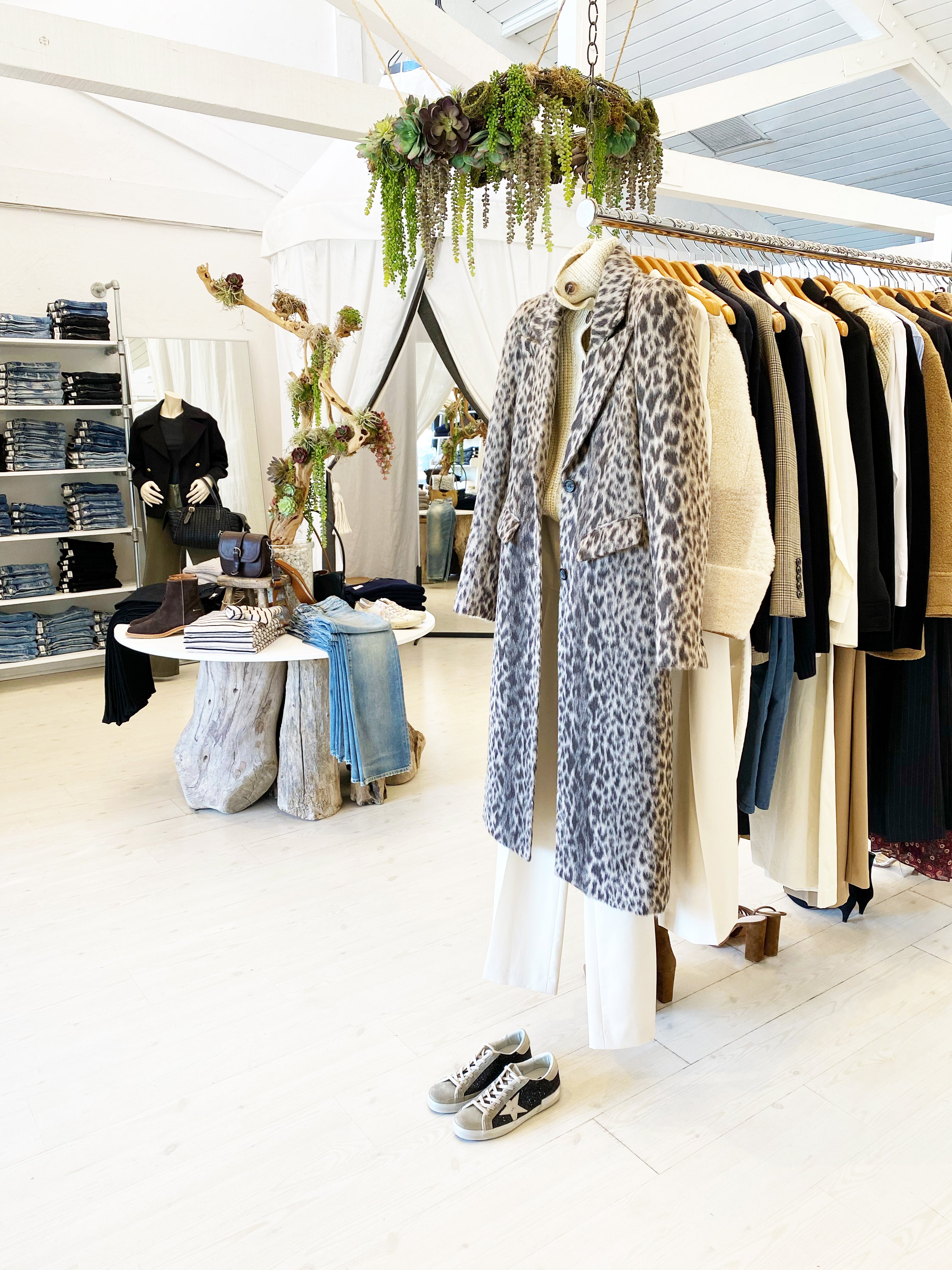The Influence of Social Media on Today's Boutique Fashion Trends
Wiki Article
Checking Out the Advancement and Effect of Apparel on Modern Fashion Trends
The development of clothes has substantially affected contemporary style trends, combining historical precedents with innovative developments. Legendary numbers like Coco Chanel and Yves Saint Laurent reinvented the fashion sector by presenting ideas that prioritize convenience and access, which proceed to resonate today.Historical Style Influencers
In the tapestry of style history, specific figures have left an indelible mark, shaping the fads and designs that define whole eras. Coco Chanel, a revolutionary designer, redefined women's style by presenting comfy, stylish garments that left from restrictive bodices. Her legendary Chanel suit and little black dress have come to be timeless staples in closets worldwide. Likewise, Christian Dior's post-war "Face-lift" in 1947, with its event of womanhood through complete skirts and cinched waistlines, noted a return to luxury and has remained to affect developers.Elsa Schiaparelli is one more critical number, renowned for her progressive layouts that included surrealist art, teaming up with Salvador Dalí to create wayward items that tested standard appearances. Her cutting-edge usage of color and vibrant patterns reverberates in modern style. Yves Saint Laurent, meanwhile, democratized haute couture with prêt-à-porter collections, bringing runway styles to the masses and establishing a criterion for modern ready-to-wear lines.
These enthusiasts, to name a few, not just reinvented fashion in their times however additionally set withstanding trends that resonate in today's fashion industry, providing a structure upon which contemporary developers remain to introduce and construct. Their traditions highlight the value of imagination and daring in style's ever-evolving story.
Technical Improvements in vogue
Amidst the vibrant landscape of the apparel industry, technological developments stand at the center of innovation, improving just how developers produce and consumers involve with fashion. The integration of 3D printing has revolutionized design processes, making it possible for developers to explore complicated frameworks and sustainable products that were formerly impossible. This innovation helps with quick prototyping, minimizing waste and quickening production times.
Smart textiles, embedding modern technology right into textiles, are additionally transforming the industry. Innovations like temperature-regulating and self-cleaning textiles supply boosted capability and convenience. Wearable innovation, incorporating attributes like health and fitness monitoring and communication, includes a brand-new measurement to style, merging aesthetics with practicality.
Cultural Shifts and Style
As technical advancements continue to improve the apparel industry, social changes are just as prominent, redefining design and consumer preferences. In recent years, the increase of social media sites systems has actually increased the circulation of international style trends, enabling varied cultural influences to exist side-by-side and weblink merge. This electronic interconnectivity has actually helped with the rapid exchange of ideas, resulting in an extra eclectic and inclusive interpretation of design that mirrors the multifaceted nature of contemporary culture.Cultural understanding and gratitude have actually prompted designers to attract motivation from a more comprehensive range of ethnic and historic contexts, integrating standard concepts with contemporary looks. This combination has actually resulted in fashion that resonates with a wider audience, advertising a sense of identification and belonging across different demographics. Furthermore, the enhancing need for personalization has driven brands to supply personalized choices, enabling consumers to express uniqueness while reflecting their social heritage.
In addition, shifting societal worths have affected style, with inclusivity and variety coming to be central motifs. The sector has begun to welcome versions and influencers of various type of body, ethnic backgrounds, and gender identities, challenging traditional beauty criteria. This makeover emphasizes the power useful site of social shifts Learn More Here fit the future of style, as style becomes a more genuine expression of cumulative and individual identity.
Sustainability and Modern Style
While the garment industry remains to evolve, the critical for sustainability has actually come to be increasingly urgent, affecting modern layout techniques. This shift aims to deal with honest factors to consider and ecological concerns, resulting in a reevaluation of traditional production techniques. Designers are currently integrating sustainable materials, such as organic cotton, recycled polyester, and eco-friendly materials, right into their collections, minimizing the ecological footprint of fashion. The rise of slow fashion, which highlights quality over amount, encourages customers to buy classic items as opposed to short-term trends.Furthermore, modern-day style is characterized by its technology in reducing waste and promoting circularity. This method not just mitigates ecological influence but additionally improves the social obligation of fashion homes.

Future Trends in Style

Sustainability will remain to be a driving pressure in shaping future fashion trends. The industry is increasingly embracing eco-friendly products and moral manufacturing techniques, replying to a growing customer demand for responsible techniques. Technologies such as bio-fabricated products and closed-loop recycling systems are set to redefine exactly how clothing is produced and taken in, lowering ecological influence while keeping style and high quality.
Cultural shifts, including the surge of inclusivity and diversity, will likewise play a pivotal role. As society becomes much more familiar with social problems, style is expected to become a system for expression and change. Developers will likely concentrate on creating collections that reflect a broader variety of experiences and identities, championing representation and accessibility.
Final Thought
The evolution of garments significantly affects contemporary style fads, where historic influences combine with contemporary styles. This recurring development highlights fashion's function as a mirror to societal values and technical development, recommending a future abundant with innovation and inclusivity.The development of clothing has dramatically affected modern-day fashion patterns, combining historical criteria with sophisticated technologies.Among the vibrant landscape of the fashion industry, technical developments stand at the forefront of technology, improving how developers develop and consumers engage with style.While the style market proceeds to progress, the essential for sustainability has ended up being increasingly urgent, influencing contemporary design methods. As sustainability ends up being ingrained in modern-day style, it paves the method for a more mindful and accountable fashion sector.
The development of clothing significantly affects contemporary style patterns, where historical impacts merge with modern designs.
Report this wiki page